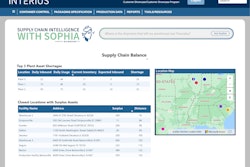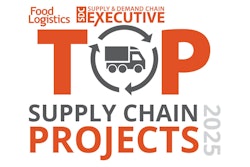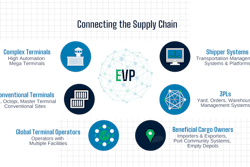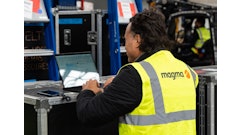
In today's rapidly evolving business landscape, supply chain visibility has become essential for companies striving to remain competitive yet profitable. Thankfully, there are more agile tools available that are transforming how businesses manage their supply chains by enhancing transparency, improving responsiveness, and driving efficiency.
At its core, supply chain visibility tracks activity along the end-to-end value chain, monitoring performance. It not only signals variability (good and bad) but also helps to predict potential disruptions across the overall supply chain. Without it, many companies can risk having excess inventory, delayed deliveries, and costly missed opportunities for enhancements. By leveraging advanced technologies, visibility empowers companies to achieve better decision making, respond swiftly to unexpected changes, and align supply chain operations more closely with business goals.
Technology tools driving supply chain visibility
Advancing visibility through technology solutions has led to results. According to a recent survey, 70% of supply chain and operations leaders indicate that their companies have tested or implemented generative AI (GenAI). GenAI is increasingly seen as a vital tool for improving decision-making through predictive analytics and insights derived from large data sets. This capability enables companies to detect potential disruptions in their supply chains early. For example, the retail sector has seen benefit with AI being used to more effectively forecast demand and enhance inventory management, allowing companies to effectively adapt to changing consumer preferences and help confirm that the desired products are available at the right time.
The Internet of Things (IoT) is another technology enhancing supply chain visibility. IoT enables real-time monitoring of goods as they move through the supply chain, from production to delivery. This technology not only improves visibility across the supply chain but also supports proactive responses to potential disruptions. By boosting operational resilience, IoT provides a deeper understanding of the supply chain ecosystem, allowing companies to better anticipate and mitigate risks.
Additionally, cloud-based solutions have revolutionized how many companies manage their supply chains. These solutions facilitate seamless data sharing among suppliers, manufacturers, and retailers, thereby improving collaboration and coordination. In consumer markets, companies are investing in a range of technologies to support the various phases of operations and supply chain activities, with 65% focusing on cloud-based technologies.
Overall, there is a growing interest in investing in operational innovation and efficiency, with the goal of enhancing supply chain visibility.
Acknowledging the challenges
With any advanced technology comes challenges that companies should learn how to navigate. One of the primary challenges associated with integrating advanced technologies into supply chains is the skills gap. According to a recent survey, 39% of survey respondents said a lack of skilled digital talent is their biggest challenge to digitizing operations. Many companies struggle to find and retain qualified talent that possesses the necessary digital skills to manage and implement these technologies effectively. This gap is particularly evident in areas like AI and data analytics.
Data management is another significant challenge in supply chain operations. While data is imperative when enhancing supply chain visibility, companies often grapple with issues related to data quality and integrity. Inaccurate, outdated, or incomplete data can lead to poor decision-making and diminish the effectiveness of AI and analytics tools. Additionally, data protection and cybersecurity are often paramount concerns, with 40% of companies identifying cyber threats and attacks as major risks to their operations.
Despite the substantial opportunities advanced technologies offer for improving supply chain visibility, companies should address the associated challenges. Overcoming these obstacles requires a holistic approach that includes strategic planning, investment in talent and technology, and a commitment to fostering a culture of innovation.
Ways to see success beyond the challenges
With the vast potential that technologies like GenAI bring, it is considered imperative for companies to approach these advancements as a marathon, not a sprint. Hastily investing in and implementing new technologies without evaluating the tools in conjunction with vulnerabilities within the organization can exacerbate existing issues and hinder the development of scalable solutions. Doing this can also help incorporate a measured approach, allowing you to identify the business outcomes your organization aims to achieve and helps determine whether the current moment is indeed the ideal time for investment.
Moreover, the success of these technological investments largely depends on a company’s existing talent pool. Implementing upskilling programs to enhance the capabilities of their current workforce and attract professionals already skilled in these technologies can bridge the skills gaps companies may have. Also, using AI can accelerate learning on the job so upskilling can occur in practice, real time. Essentially, make space for testing and learning to build trust as employees identify the many ways emerging technology can augment their skills.
Beyond logistics - The path forward
As companies navigate this digital age, the importance of supply chain visibility can only continue to grow. By leveraging technologies like GenAI, IoT, cloud computing, and others, organizations can achieve unprecedented levels of visibility that help drive operational efficiency, customer satisfaction and competitive advantage. The journey ahead requires commitment, innovation, and a willingness to embrace change. As the industry moves forward, it should remain focused on harnessing these technologies to create a future where supply chains are not just an enabler, but a strategic asset that can propel business growth.




















